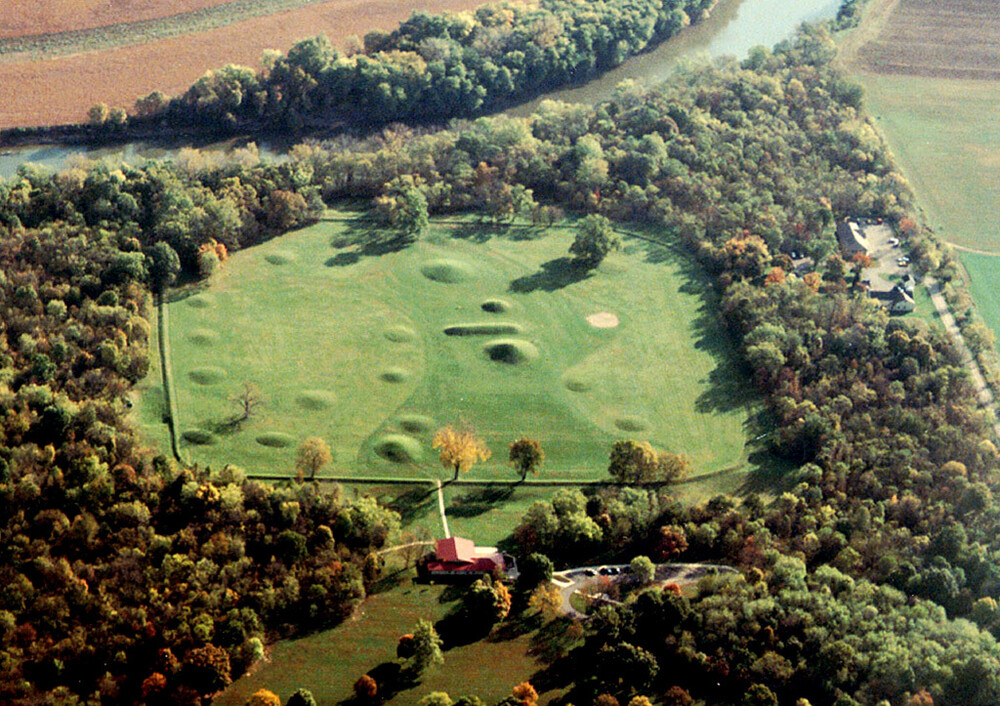
- Details
- By Native News Online Staff
The UNESCO World Heritage Committee on Tuesday, September 19, 2023 named the Hopewell Ceremonial Earthworks, a group of eight ancient earthwork sites in southern Ohio, to its World Heritage List. The decision by the World Heritage Committee was made by consensus at its 45th session in Riyadh, Saudi Arabia.
The monumental earthworks were built 2,000 years ago by Native American communities. Five of the earthwork sites are managed by the National Park Service and three are managed by the Ohio History Connection.
The destination was applauded by U.S. Secretary of the Interior Deb Haaland (Laguna Pueblo), whose department oversees the National Park Service.
“Today’s designation by UNESCO is a tremendous opportunity and recognition of the contributions of America’s Indigenous Peoples,” Haaland said in a press release. “World Heritage designation is an opportunity for the United States to share the whole story of America and the remarkable diversity of our cultural heritage as well as the beauty of our land. The Hopewell Ceremonial Earthworks are unique creations of America’s indigenous people and a remarkable survival of our ancient history.”
The sites that comprise Hopewell Ceremonial Earthworks were built between 1,500 and 2,200 years ago by people now referred to as the Hopewell Culture. The earthworks, built on an enormous scale and using a standard unit of measure, form precise squares, circles, and octagons as well as a hilltop sculpted to enclose a vast plaza. The geometric forms are consistently deployed across great distances and encode alignments with both the sun’s cycles and the far more complex patterns of the moon. Artifacts, which are among the most outstanding art objects produced in pre-Columbian North America, show that those who built the earthworks interacted with people as far away as the Yellowstone basin and Florida. These are among the largest earthworks in the world that are not fortifications or defensive structures.
The properties comprising the Hopewell Ceremonial Earthworks:
- Hopewell Culture National Historical Park in Chillicothe, including the Mound City Group, Hopewell Mound Group, Seip Earthworks, High Bank Earthworks and Hopeton Earthworks
- The Ohio History Connection’s Octagon Earthworks and Great Circle Earthworks in Newark and Fort Ancient Earthworks in Oregonia
During a recent vote, the World Heritage Committee members agreed that these earthworks deserve to be recognized alongside such places as Stonehenge in England and the Nazca Lines in Peru, as well as other iconic places in the United States, including Independence Hall and the Grand Canyon. The National Park Service manages all or part of 19 of the 25 World Heritage Sites in the United States. It is also the principal U.S. government agency responsible for implementing the World Heritage Convention in cooperation with the Department of State.
The inclusion of a site in the World Heritage List does not affect U.S. sovereignty or management of the sites, which remain subject only to U.S., state and local laws. Detailed information on the World Heritage Program and the process for the selection of U.S. sites can be found at the National Park Service’s website.
More Stories Like This
Native News Weekly (August 25, 2024): D.C. BriefsUS Presidents in Their Own Words Concerning American Indians
Two Murdered on Colville Indian Reservation
NDAA passes House; Lumbee Fairness Act Advances
NFL, Vikings to Host Native All-American Game, Youth Flag Clinic
Help us defend tribal sovereignty.
At Native News Online, our mission is rooted in telling the stories that strengthen sovereignty and uplift Indigenous voices — not just at year’s end, but every single day.
Because of your generosity last year, we were able to keep our reporters on the ground in tribal communities, at national gatherings and in the halls of Congress — covering the issues that matter most to Indian Country: sovereignty, culture, education, health and economic opportunity.
That support sustained us through a tough year in 2025. Now, as we look to the year ahead, we need your help right now to ensure warrior journalism remains strong — reporting that defends tribal sovereignty, amplifies Native truth, and holds power accountable.
 The stakes couldn't be higher. Your support keeps Native voices heard, Native stories told and Native sovereignty defended.
The stakes couldn't be higher. Your support keeps Native voices heard, Native stories told and Native sovereignty defended.
Stand with Warrior Journalism today.
Levi Rickert (Potawatomi), Editor & Publisher


